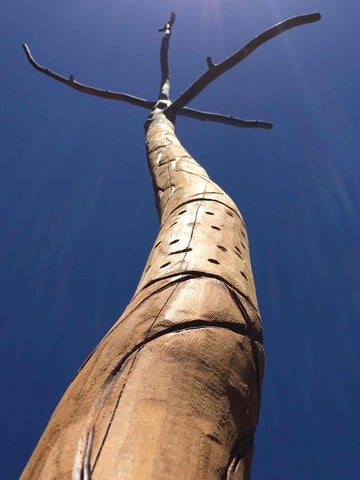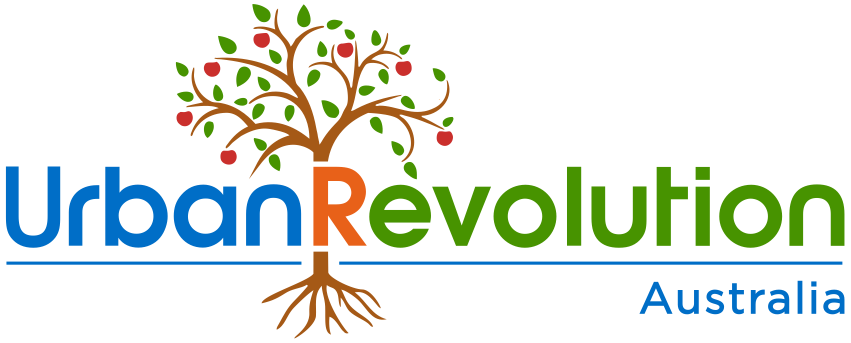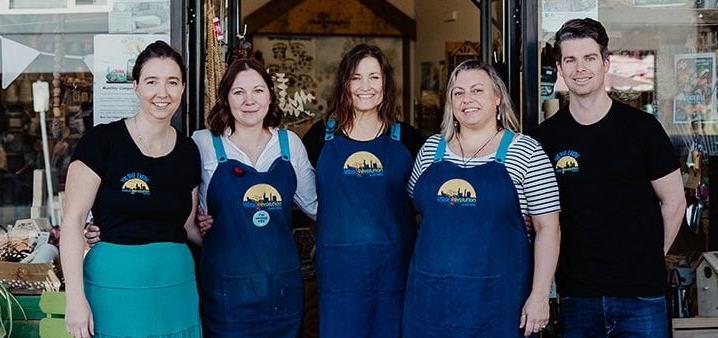A bee friendly garden is a place that can provide food, shelter, and a nesting space for insect pollinators, such as honey bees and our many varieties of native bees, as well as increasing the biodiversity of your garden. It is also a beautiful place to sit and observe nature in action.
Pollinators are critical to a successful edible garden and an optimal bee friendly garden needs to provide them with water, food and shelter, and a seat for you to enjoy them in action!
How do I provide food in a bee friendly garden?
A pollinator habitat garden is more than just flowers. By providing an assortment of plants, which flower throughout the year, you are providing a consistent food supply which will encourage pollinating insects and birds to stay, feed, drink, shelter and even reproduce in your garden.
If you have the space, it is recommended that you plant swathes or large patches of flowers, rather than scattering them randomly through the garden as mass plantings are more likely to attract pollinators to the area.
By planting flowering food-crops in large patches, you encourage specialist pollinators such as bees to forage within these patches, cross pollinating the plants as they move efficiently from flower to flower.
For a list of Australian native flowers that attract native bees refer to our Native Bees article.

It is recommended that you plant swathes or large patches of flowers
How do I provide shelter for bees in my garden?
Hollow logs, pieces of thick bark and crowds of rocks will all provide shelter and nesting substrate for a variety of pollinators. Resin bees, Leaf-cutter bees and solitary wasps willnest in large drilled holes in wood, which mimic the natural cavities produced by wood-boring insects.

Holes have been drilled into this wooden totem pole to create a bee hotel
Hollow stems can be collected and bundled up when plants are pruned to attract reed bees and masked bees as well as small solitary wasps and ants.
By providing small cavities in rockeries or with layers of rolled bark, you will provide shelter for Ladybirds, Resin bees and other pollinators.
You can design and make your own bug hotel, or there is a range of products available that are specifically designed to provide shelter for bees and other pollinating insects such as these bee hotels. A bee or insect hotelis a safe habitat for solitary bees, butterflies, ladybirds and other beneficial insects which will improve biodiversity and integrated pest management in a garden.

This DIY native bee hotel has been handmade from timber
Bees will lay their eggs in the bamboo tubes and fill them with food to ensure the next generation have what they need after hatching. Predatory wasps will stuff the tubes full of greenfly larva, aphids and caterpillars to feed their emerging young.

A bee hotel is purpose designed to provide an optimal habitat for bees and pollinating insects.
In Australia, gardeners are encouraged to mulch their plants, to maintain soil moisture. However, some of our pollinators, such as solitary bees and wasps, nest in the ground and find it hard to dig through the thick layers of mulch. Leave a few patches in your garden with only a fine covering of mulch such as a straw mulch to help them out.
How do I provide water for bees and beneficial insects in my urban garden?
Water is a necessity for all pollinators including bees, as well as birds and small reptiles so its a good idea to provide a variety of water dishes or bird baths of different sizes and depths to accommodate all the wildlife in your garden.

A shallow dish is ideal for insects and bees to drink from
Placing a large rock, some sticks or a scattering of pebbles, will reduce the risk of insects drowning and make the water more accessible. Like all living organisms insects need some salt and adding a tiny bit of salt to your water source will attract bees - which is why they hang around our swimming pools in summer so much!
A bowl filled with wet mud will provide minerals and water for some butterfly species, and rocks provide insects with a warm place to bask or hide under.
What plants create a bee friendly garden?
Bees and other pollinators are attracted to many different flowers.
Some vegetable and herb flowers, such as dill, basil, fennel, broccoli, and carrot, are great pollinator food, so select a few to ‘sacrifice’ and let them bolt to flower for the bees to enjoy, then collect the seeds after for you to sow again in the next season.
Beneficial weeds such as dandelions and clovers are not only great for soil health but are also a great source of bee food, so if you can bear to let a few weeds go to flower too, the bees will be very happy!
Bees also enjoy the blossoms on fruit trees and are in fact a necessity for fruiting trees, such as apple and plum trees that require cross pollination in order to produce fruit.
Plants such as borage and comfrey are a magnet for bees and are also a beneficial companion plant in the orchard for attracting beneficial predatory insects such as lacewings. Exotic flowering species such as salvias, hebe and lavender are also great planted in swathes.

Bees are happily snacking on this apple tree blossom
Many native plants are great for attracting our native bees as well as other pollinators. Banksia, Callistemon and Melaleucaare all fantastic plant groups because they produce lots of pollen and nectar. Some Acacia species, particularly the wattles, are packed with pollen too. Lots of ground-dwelling bee species will go for daisies, alyssums and other flowers on low shrubs and groundcovers.

Callistemon Flowers are Bee-Attracting
How do I maintain my bee friendly garden?
Watering the plants deeply, and frequently as well as growing them in healthy soils will ensure the plants are healthy and will therefore produce ample pollen and nectar for the bees.
It is also important to avoid the use of insecticides, remembering that even those insecticides labelled as organic or eco friendly, generally do not discriminate between good bugs and bad bugs, and can be harmful to bees and other pollinating insects.
Instead look to natural remedies like soapy water, targeted chilli or garlic sprays. Use integrated pest management techniques such as using companion, decoy or sacrificial plants to help deter pests or keep them contained.
This will ensure that the bees which visit your garden remain healthy and will setup home there.






Kate - Urban Revolution
May 23, 2021